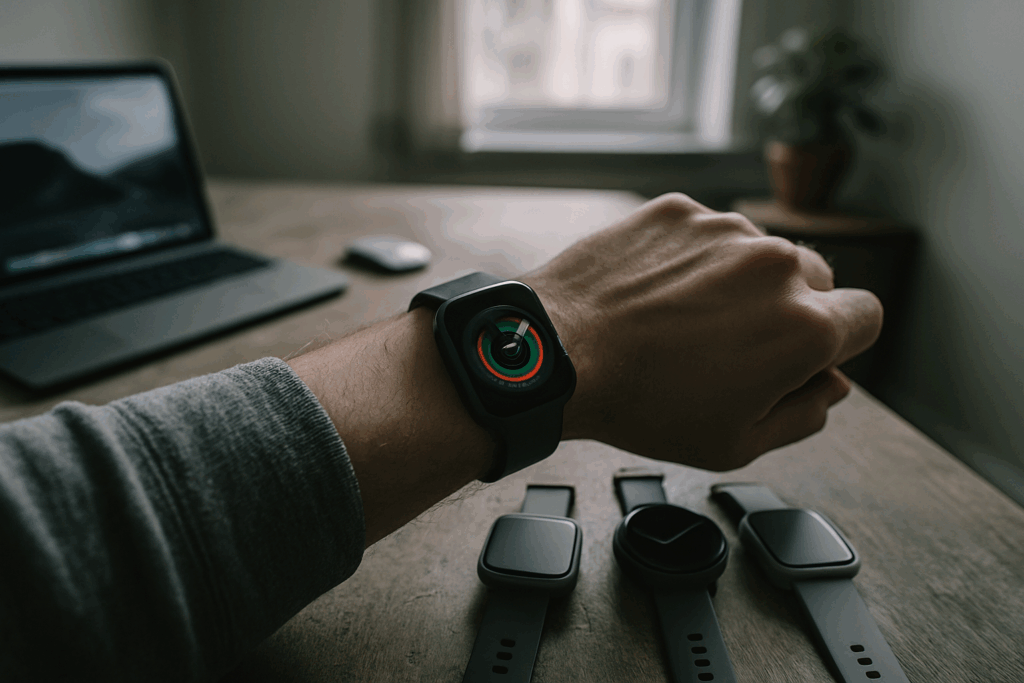Headsets to Watch in 2024
The XR landscape in 2024 is more competitive than ever. From casual experiences to high-end immersive tools, there’s a headset fit for every user. Here’s a breakdown of the top contenders and who they’re designed for.
Meta Quest 3
A major leap forward, the Meta Quest 3 combines sleek hardware with accessible innovation:
- Slim profile with improved comfort over previous generations
- Mixed-reality support, blending virtual content with your physical environment
- Solid standalone performance for gaming, fitness, and content consumption
Who it’s best for:
- Casual gamers looking for fun without wires
- Fitness enthusiasts using VR for home workouts
- First-time XR users who want a balance of price and power
Apple Vision Pro
Apple steps into the XR ring with a premium device focused on quality and integration:
- High-resolution visuals and smooth interface interactions
- Tight ecosystem integration, especially with Mac and iOS devices
- Spatial computing that goes beyond traditional VR experiences
Who it’s best for:
- Digital creators wanting pixel-perfect visuals
- Developers building the next generation of spatial apps
- Professionals in design, film, or education
PlayStation VR2
Building on the success of the original, the PlayStation VR2 brings console-based XR to the next level:
- Simple setup, tied closely to the PS5
- High-end performance, including eye tracking and haptic feedback
- Immersive gameplay with a growing list of supported titles
Who it’s best for:
- PlayStation loyalists
- Console gamers venturing into VR for the first time
- Fans of immersive, story-driven experiences
HTC Vive XR Elite
HTC continues to focus on flexible, professional-grade solutions:
- Compact and modular design, making it easy to customize
- Strong productivity features, including support for enterprise-level apps
- Less centered on gaming, with a broader approach to VR functionality
Who it’s best for:
- Business and enterprise users
- Educators and trainers deploying VR in professional settings
- Power users seeking versatility over entertainment
Each headset brings something unique to the table in 2024. Whether you’re after immersive gameplay or cutting-edge productivity, this year’s lineup offers refined options across the XR spectrum.
Introduction
Vlogging isn’t just alive in 2024 — it’s proving it can evolve fast enough to keep up with the wild pace of digital change. Despite shifting algorithms, new platforms popping up, and audiences spreading thinner across the web, creators have stayed agile. They’ve adapted. They’ve learned how to tell sharper stories in tighter windows. And they’ve held their ground by building loyal followings who care more about connection than polish.
But this year brings new pressures. Short-form is still huge, but viewers are craving more substance. AI tools are reshaping how content gets made, and platforms are rewriting the rules behind what gets seen. Success now depends on being both creative and tactical. For vloggers, 2024 isn’t about chasing every trend — it’s about picking a lane, staying sharp, and showing up where your audience actually is. The landscape is shifting fast. Smart creators will shift with it.
When it comes to gear that shapes the vlogging experience, hardware matters. Displays are sharper, faster, and easier on the eyes than ever. Right now, Apple Vision Pro and Meta Quest 3 are leading the conversation. Apple’s sharp micro-OLED display sets a new bar in clarity, though Meta scores points with smoother refresh rates that reduce motion blur during fast movements. If you’re editing or filming in a virtual setup, that difference shows.
Comfort is finally getting the attention it deserves. Vlogging with a headset on for hours is brutal if the weight’s off. Lighter builds, better straps, and balanced designs are now table stakes. Quest 3 delivers a good weight balance, while devices like Pico 4 focus more aggressively on ergonomic design. If you’re serious about long sessions, don’t ignore the feel.
Lastly, input tech is either improving your workflow—or getting in the way. Controllers are still solid, but more creators are switching to hand tracking when precision isn’t critical. It’s fluid for navigation and quick interaction, though still laggy for fine tasks. Finger tracking? Cool, but mostly hype for now. Stick with what’s fast and reliable when you’re on a deadline.
Mixed Reality: Blending Physical + Digital Spaces
Vloggers are starting to treat mixed reality like their new playground. Virtual overlays meet real-world backdrops, creating content that feels more immersive without needing a Hollywood budget. Whether it’s AR pop-ups during travel vlogs or virtual guest cameos in room-scale studios, creators are finding low-friction ways to bring digital and physical together.
A big part of this wave is eye-tracking and foveated rendering. It sounds technical, but the idea is simple: only render what the viewer is actually looking at in high detail. That makes performance smoother and frees up power for mobile setups. The tech isn’t perfect, but it’s getting close enough to be usable in the field.
Battery life is still a limiter. Most extended mixed reality shoots require either hot-swapping power banks or linking up to external portable power stations while on the go. If you’re serious about mobility, you’ll want gear that can run hard without shutting down mid-shot.
Same goes for storage and portability. Many vlogging headsets and devices are still bulky, and internal storage fills quick with layered content. Streamlined rigs with SSD-based offloads, durable cases, and fast turnaround systems are becoming the norm for creators who travel and shoot daily.
If you’re wondering which portable power units can stand up to this kind of load, check out this detailed breakdown: Portable Power Stations Reviewed—Which Models Are Worth the Investment?.
Budget vs. Premium—Who Delivers ROI?
The gear gap is real, but it’s not as wide as marketers want you to think. In 2024, more vloggers are weighing budget setups against premium rigs and asking the only question that really matters: does it make your content better?
Budget cameras and mic kits under $500 are good enough for most platforms. Pair that with free or low-cost editing software and you’re already in the game. What actually sets creators apart now is how fast they can shoot, cut, and publish without drowning in tech issues or delays. That’s where spending smarter—not bigger—matters. Reliability wins.
Premium setups still have their place. Better lenses, audio clarity, and faster processing can be game-changers—especially for creators doing high-volume or cinematic work. But with those perks come hidden expenses: subscription editing tools, cloud storage, branded mounts, and upgrade cycles that never end. That shiny camera isn’t the whole cost.
Creators making gear decisions in 2024 are thinking long-term. What lasts? What scales with your growth? And what actually supports your workflow instead of slowing it down? The sweet spot lies where quality meets agility. ROI isn’t just about image sharpness. It’s about finishing what you start, hitting upload, and building a channel that sticks around.
Top VR Headsets for Creators in 2024
Virtual production and immersive storytelling are on the rise. For vloggers and creators exploring mixed reality and 3D content, choosing the right VR headset can help unlock powerful new ways to engage audiences.
Here’s a breakdown of the top headsets based on different creative and performance priorities.
Best All-Around: Meta Quest 3
If you’re looking for a solid balance between price, performance, and usability, Meta Quest 3 is the go-to pick.
- Affordable compared to high-end models
- Strong standalone performance with no PC required
- Access to Meta’s growing content ecosystem
- Great for both casual gaming and serious creative tools
Most Innovative: Apple Vision Pro
Apple Vision Pro represents a major leap in spatial computing, especially for creators already in the Apple ecosystem.
- Standout feature: ultra-high-resolution displays and eye-tracking
- Seamless integration with iOS and macOS workflows
- Strong potential for future AR/VR content creation tools
- Premium pricing, but unmatched innovation
Best for Gamers: PS VR2
For creators focused on gaming content, the PS VR2 delivers strong native support and access to popular titles.
- Designed exclusively for PlayStation 5
- Impressive visuals with OLED displays
- Haptic feedback for greater immersion
- Ideal for streaming or reviewing VR gameplay
Best for Versatility: HTC Vive XR Elite
The HTC Vive XR Elite is ideal for creators who want flexibility across gaming, productivity, and immersive editing.
- Modular design allows for tailored setups
- Works as both standalone and PC-connected headset
- Strong performance for both AR and VR environments
- Lightweight design for longer sessions and mobile use
The VR Shift is About More Than the Headset
Just grabbing the latest headset won’t cut it. The device is one part of the puzzle, but what actually shapes the experience is the ecosystem around it—apps, platforms, creator tools, and the kind of content being built. Vloggers diving into VR need to look beyond specs and think about what they’re trying to create. Do you want immersive storytelling? Interactive tutorials? Community-driven spaces? Pick the gear that fits the job, not just the hype.
The landscape is still early and volatile. Improvements are rolling out fast, and what feels cutting-edge today might be entry-level in six months. That’s fine. The point is to stay flexible. Focus on ideas, workflows, and audience value. VR isn’t a solved space—it’s a fresh field. Creators who show up now, adapt fast, and keep experimenting will be the ones defining what vlogging looks like there.


 Isaac Lesureneric is a tech author at gfxrobotection focusing on digital security, automation, and emerging technologies. He shares clear, practical insights to help readers understand and adapt to the rapidly changing tech world.
Isaac Lesureneric is a tech author at gfxrobotection focusing on digital security, automation, and emerging technologies. He shares clear, practical insights to help readers understand and adapt to the rapidly changing tech world.

